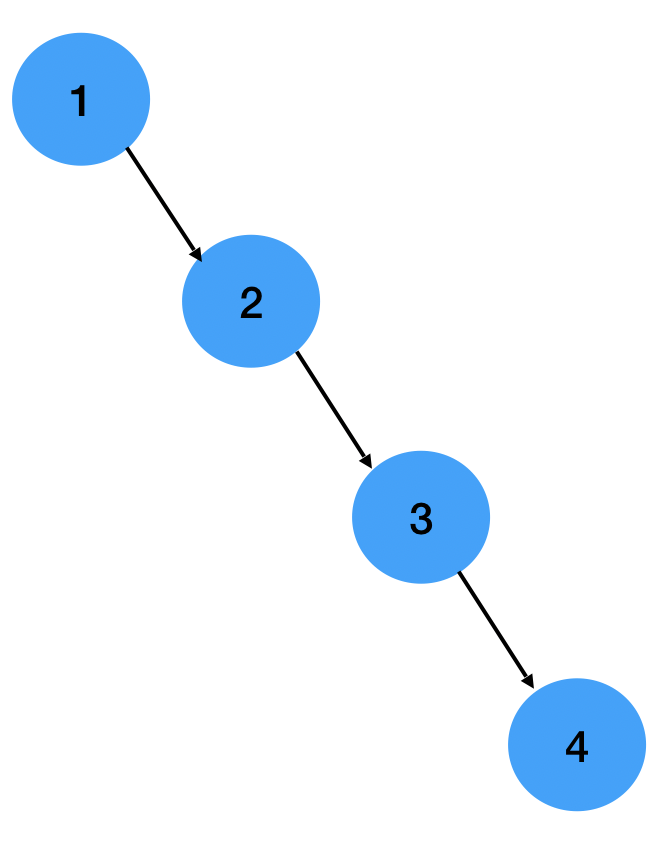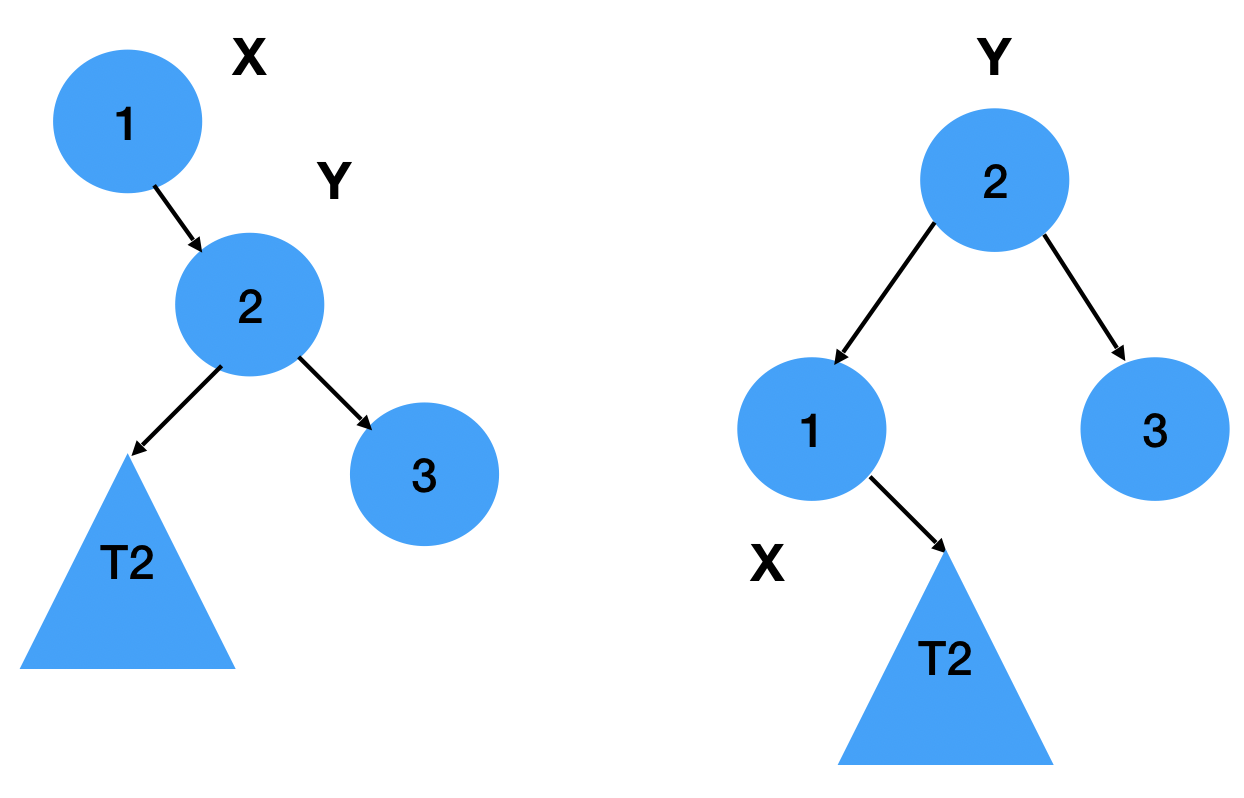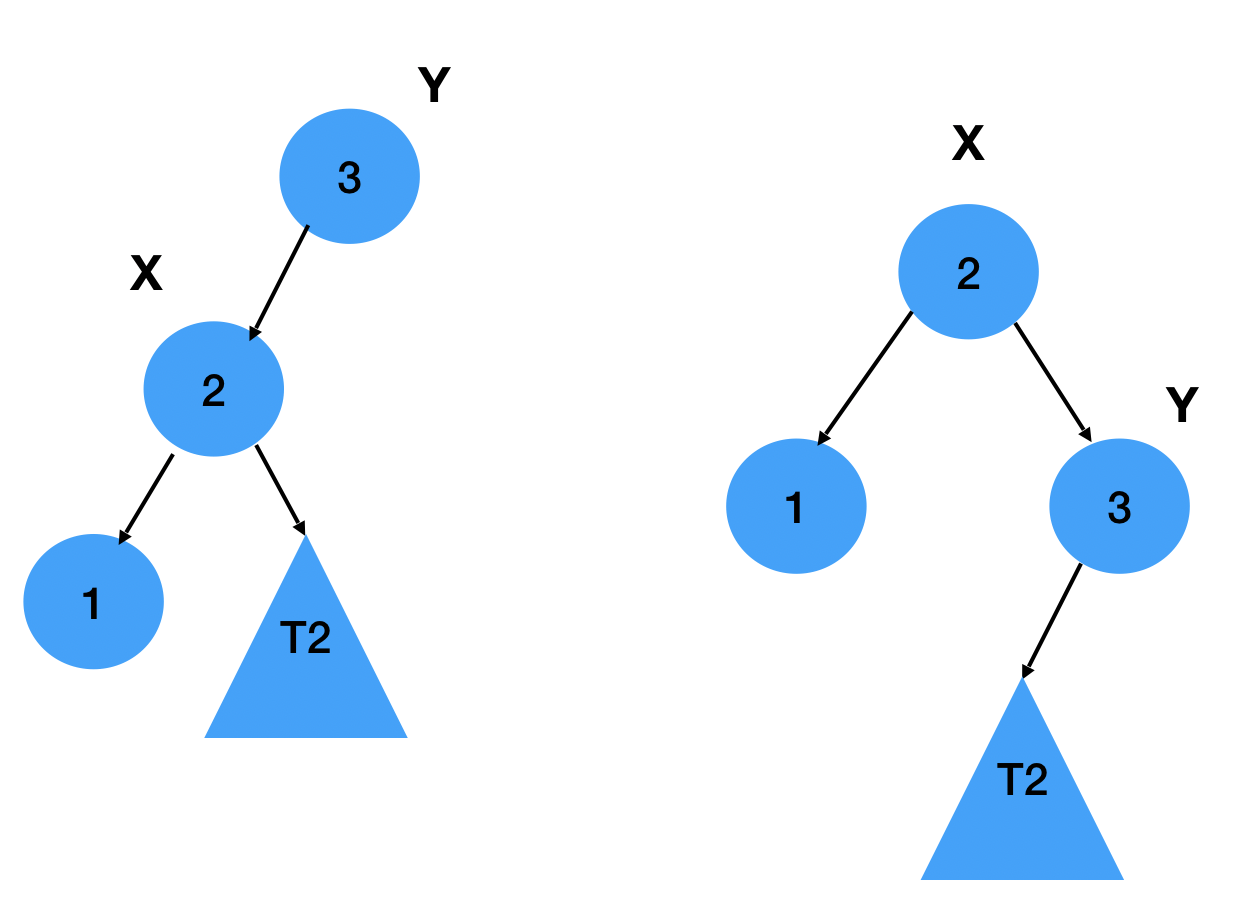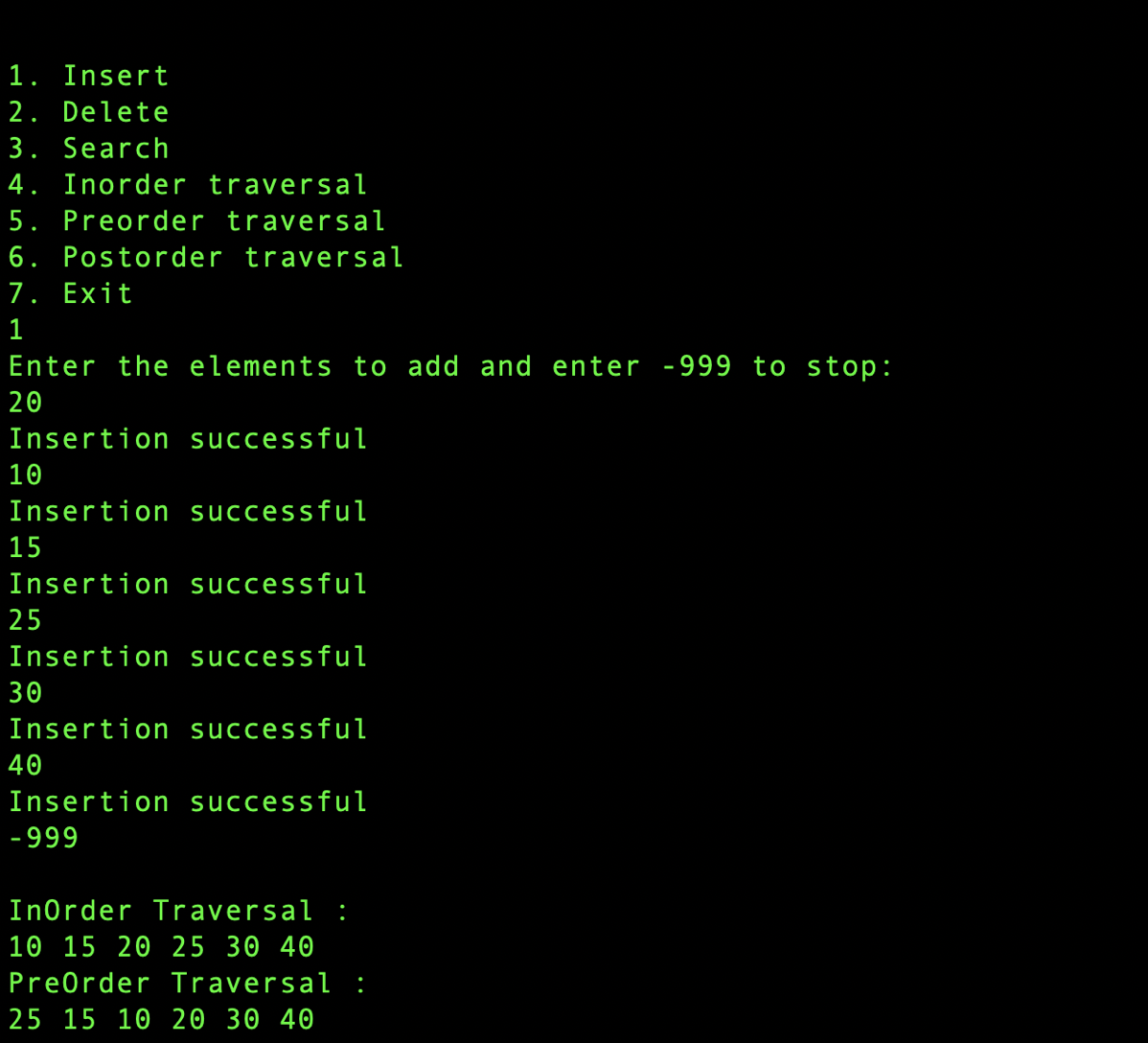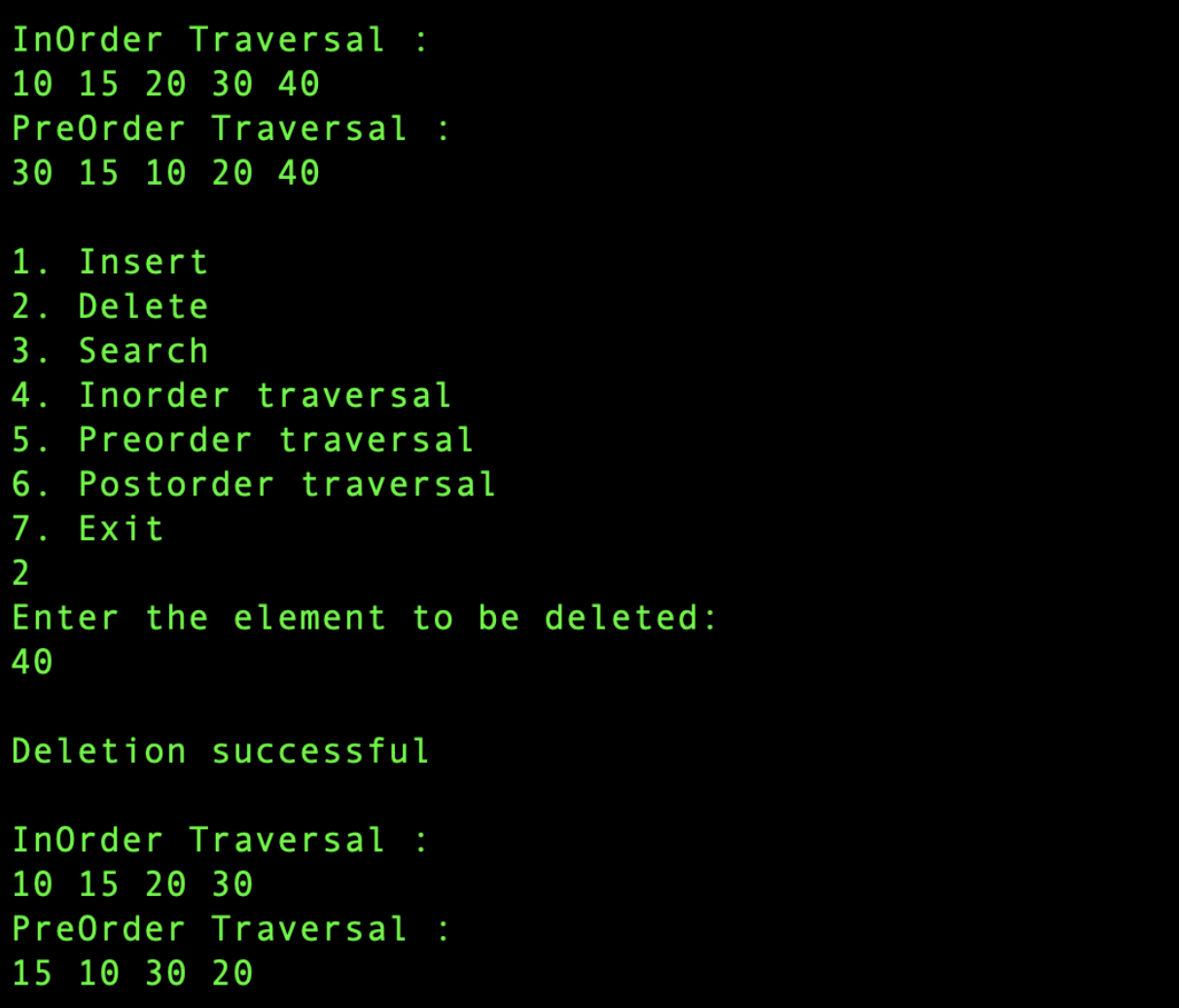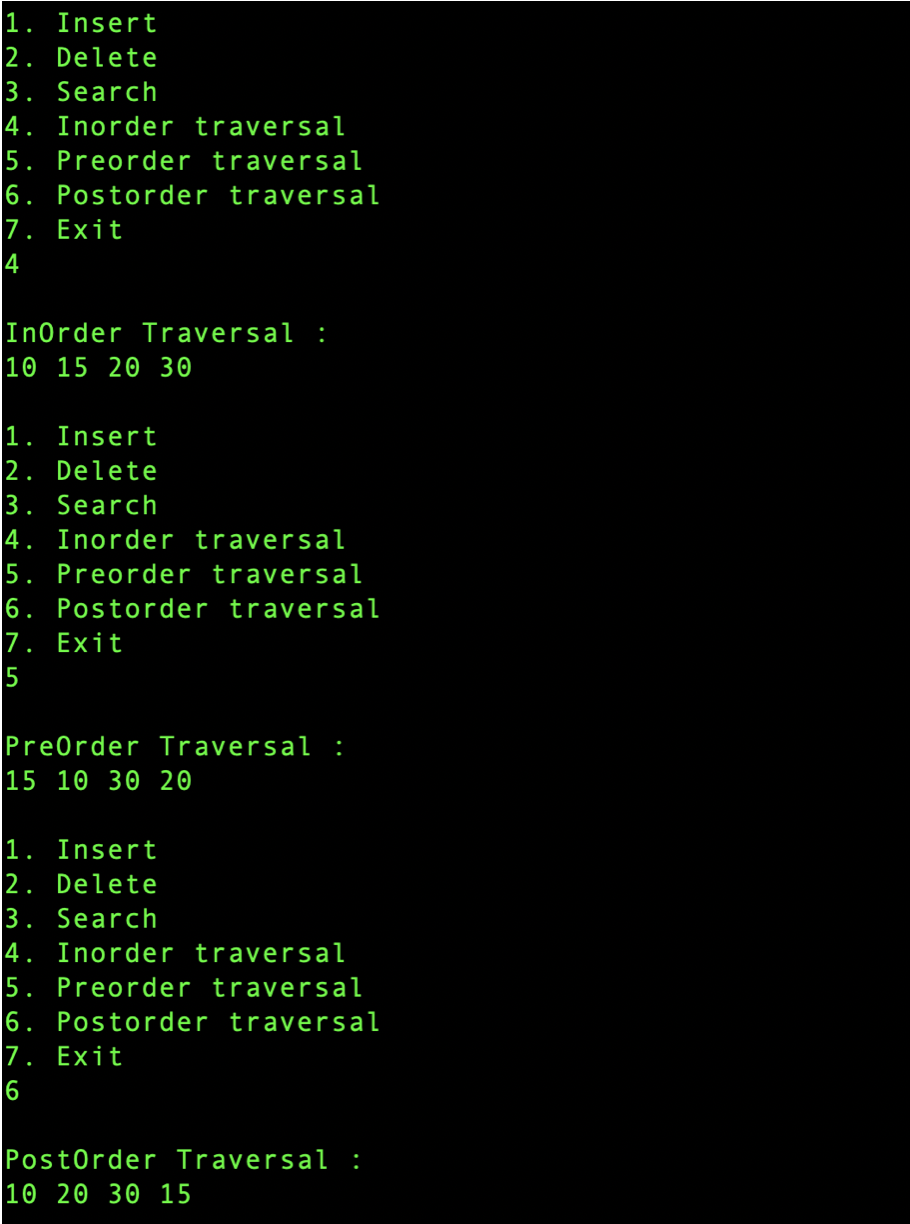Consider the case when the following values are inserted in order into a Binary Search Tree : 1, 2, 3, 4 This would generate a skewed BST as follows :
Such a tree is not desirable since the complexities of all operations become Linear
| Operation | Cool |
|---|---|
| Search | O(n) |
| Insert | O(n) |
| Delete | O(n) |
Hence AVL Trees are used. AVL Trees are self-balancing Binary Search Trees that balance the height of the tree after any insertion or deletion.
-
-1 ≤ hR - h^L ≤ 1 where hR is the height of the right subtree and hL is the height of the left subtree The height of the left and right subtrees differ by no more than 1
-
The expression hR - hL is known as the Balance Factor, which can take only the values {-1, 0, 1}
Though AVL Trees where the first self-balancing data structure to be invented after which data structures with fewer rotations like Red Black Trees where invented, AVL Trees are still used in a lot of places.
They are used in NoSQL databases as they take less time for large number of updates. AVL Trees have also combined with B-Trees to create a new data structure called T-Tree which is used in popular NoSQL databases. For more interesting information and visuals, refer https://pandorafms.com/blog/nosql-databases-the-definitive-guide/
| Operation | Are | Cool |
|---|---|---|
| Search | O(n) | O(Log n) |
| Insert | O(Log n) | O(Log n) |
| Delete | O(Log n) | O(Log n) |
Space complexity is O(n)
There is an interesting proof as to why the complexities are always O(n) in https://en.wikipedia.org/wiki/AVL_tree#Properties
Every node in an AVL tree contains 4 attributes represented in the diagram below :
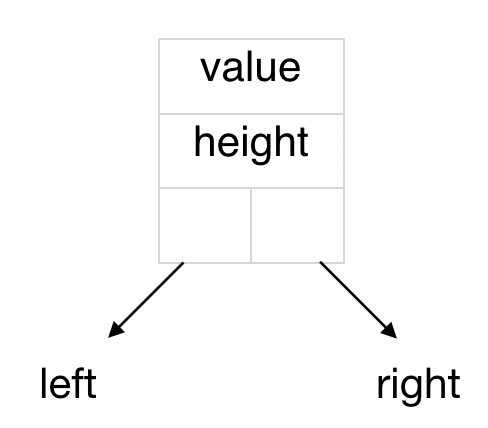
Before understanding the basic operations of an AVL Tree, you need to know how rotations (fundamental properties of AVL Trees) work :
The diagrams below are intended to help you understand the rotateLeft and rotateRIght functions in the code.
Algorithms can be referred here : https://www.geeksforgeeks.org/avl-tree-set-1-insertion/
First, the new value is inserted just like a BST, then the height values are updated and either the rotateLeft and rotateRight functions are called depending on the value of the Balance factor.
There are 4 cases that may arise :
- Left Left (LL)
- Left Right (LR)
- Right Right (RR)
- Right Left (RL)
Algorithms can be referred here : https://www.geeksforgeeks.org/avl-tree-set-2-deletion/
Here too, standard BST deletion is perfomed after which rotations are performed depending on the positions of the child and grandchild.
It is similar to the search operation in a standard BST
- Search, Insertion and Deletion are O(log n) since tree is always balanced
- Extra space is required for balance factor.
- Though asymptotically faster, rebalancing costs time. Red-Black trees reduce the number of rotations and are therefore faster than AVL Trees.
Once you compile and run the code, you can insert, delete and search values. Also you can view the inorder, preorder and postorder traversals at any point.
Thanks for reading :)
